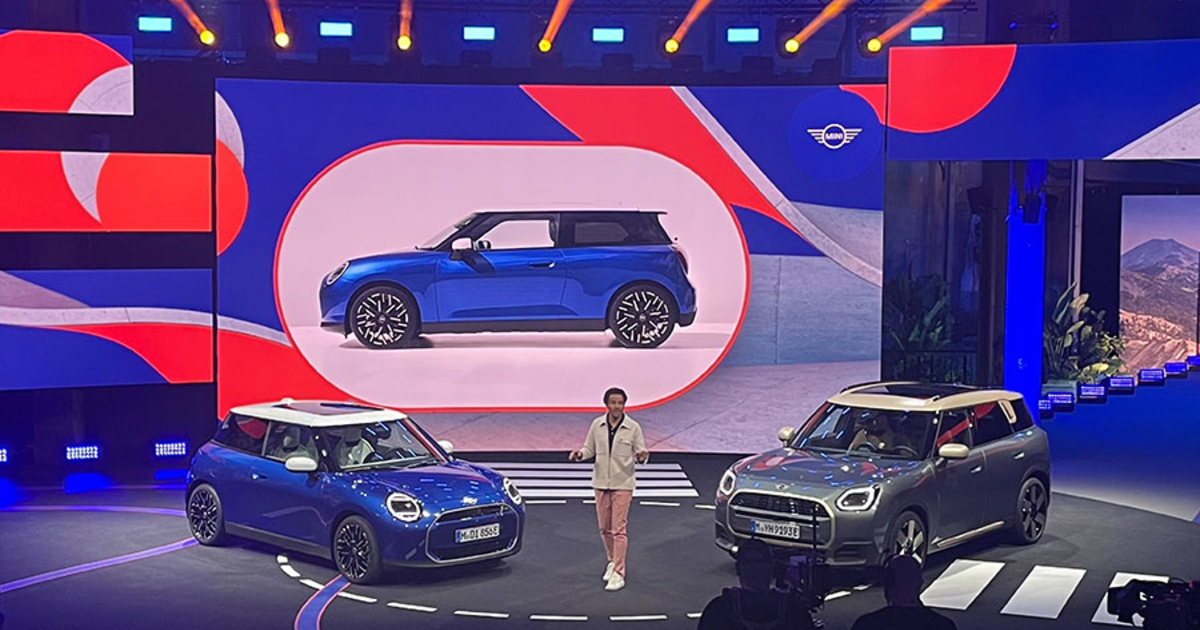
MUNICH — Mini seeks to revive its flagging fortunes and shed its quirky status in the U.S. by giving Americans more of what they want. The BMW-owned compact car brand will up-size its largest model — the Countryman — and electrify it.
The redesigned crossover, available in combustion engine and battery-powered versions, shares a platform with the subcompact BMW X1 Series. The electric 2025 Mini Countryman SE ALL4 arrives in U.S. stores in September 2024.
Pricing was not disclosed.
The electric Countryman is the second volume EV from the Mini brand, which has seen U.S. sales tumble 32 percent since 2018. The British marque plans to go all-electric by 2030.
“We’re at the start of what is the most significant evolution of our product portfolio since we launched (in the U.S.) in 2002,” Michael Peyton, vice president of Mini of the Americas, told Automotive News.
Mini has announced it is also planning a subcompact crossover and a Cooper SE replacement as electric models, and they will be built in China and developed in cooperation with Great Wall Motor. However, the automaker declined to confirm if those EVs will be sold stateside.
The Countryman, last redesigned in 2017, remains a workhorse for Mini in the U.S. The crossover was a volume nameplate in the year’s first half, accounting for 5,257 units, up 31 percent from a year ago.
Globally, Mini will offer the electric Countryman in two battery versions with front-wheel and all-wheel drive. But the U.S. will receive only the higher performance, awd variant given market preferences.
The 313-hp, dual-motor Countryman SE ALL4 has a 0-62 mph time of 5.6 seconds. Based on European testing cycle estimates, the 66.45-kilowatt-hour battery delivers 269 miles on a single charge.
The electrification of Countryman is a “necessary step to force the vehicle into a more competitive realm,” said Ivan Drury, Insights director at Edmunds.
According to Edmunds data, as of July 2023, Countryman’s average transaction price of $40,025 is at a 40 percent premium over the subcompact crossover segment’s $28,700.
“However, Mini consumers are more about personality versus practicality, and the X factor for EVs is that they have more leeway when it comes to consumers unhinging vehicle size and price,” Drury said. “An electric Countryman allows Mini to compete on another playing field, at least for the time being, in which the number of entrants remains small and the rules of pricing and segmentation are still loose.”
The U.S. electric vehicle market is concentrated in the compact crossover segment, accounting for about a dozen models. According to Edmunds data, almost half of all EVs sold in the U.S. were compact crossovers in the second quarter.
Mini has Volvo’s XC40 in its crosshairs with the third-generation Countryman, AutoPacific analyst Paul Waatti said.
“The two are dimensionally very similar and offer internal combustion and awd EV versions,” Waatti said. “Countryman’s initial performance and range estimates are on par with XC40 Recharge. And considering Countryman is getting larger and offering better packaging, its price ladder may look similar as well.”
Mini’s designers have balanced modern tech and retro styling in the electric Countryman, said John Secondo, general manager of Mall of Georgia Mini in Buford, Ga.
“It’s more customizable and still delivers the go-kart driving feel that appeals to the brand’s fanatics,” Secondo said.
The Countryman’s zero-emission powertrain and larger proportions should appeal to consumers who otherwise might not have considered the compact car brand.
“Consumers have been demanding a larger Countryman for years,” Secondo said. “Well, here it is.”
He expects the electric Countryman will account for 15 to 20 percent of the nameplate’s sales.
Secondo said the Countryman SE’s more practical range, high-tech interior and utility position the EV as the primary vehicle for many households.
“This will undoubtedly put Mini on a whole new set of shopping lists,” he said.
Peyton expects the electric Countryman to attract a consumer demographic the entire auto industry is chasing.
“We know that EVs tend to attract a younger generation of customers who embrace electrification as the new normal,” he said. “With the [electric] Countryman offering increased utility and range, we see it as an ideal choice for younger families.”
Mini redesigned the Countryman to be 2.36 inches taller and 5.12 inches longer than the outgoing model. However, a slightly curved roof that transitions to a newly designed C-pillar makes the vehicle appear more compact and upright.
A curved hood, slightly wider track and raised body give it a rugged and lifted look.
Up front, a newly designed octagonal grille hides a radar sensor that helps power driver-assist systems. The new Countryman is the first Mini with a Level 2 assistance system that enables semiautomated driving.
In the rear, a vertical light cluster brackets the taillights and frames the large central section of the vehicle’s rear. The design emphasizes the crossover’s wide stance while giving it an upright look.
The electric Countryman hints at the future with a new minimalist and sustainable interior design.
Mini said the new EV’s interior is the largest and most spacious in the lineup, with more legroom and headroom, thanks to the vehicle’s skateboard platform that ditches the bulky transmission tunnel.
Compared with the outgoing model, front-seat passengers get nearly 1.18 inches of extra width in the shoulder and elbow area. The shoulder width of the rear seats increases by 0.98 inches.
A floating 9.5-inch circular OLED touchscreen comes standard and runs the MINI Operating System 9. The screen displays driving information, vehicle controls, navigation and media.
Physical knobs and buttons are kept to a minimum and relegated to a discreet panel below the infotainment display that packs the gear shifter and vehicle start-stop button.
Woven textile surfaces of recycled polyester cover the dashboard and the door panels.